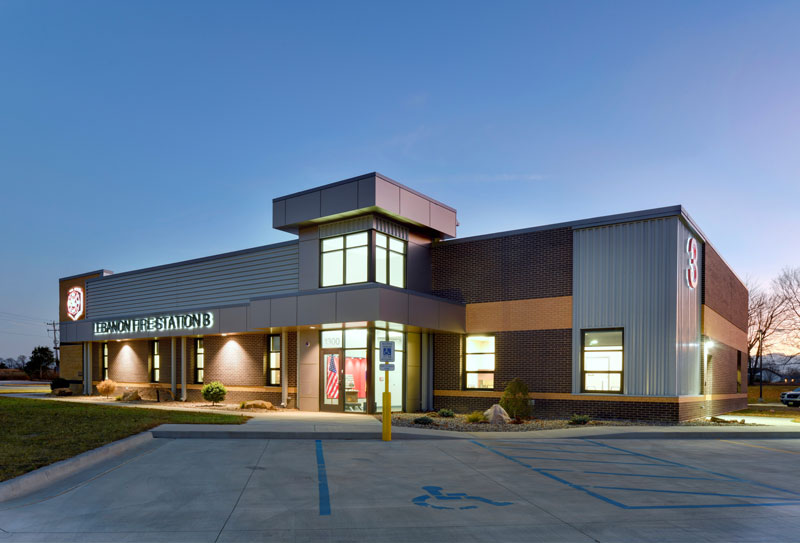
Lebanon (MO) Fire Department’s biggest need for a new fire station was in the southwest portion of the community that was growing steadily, where the response times were greater than the department would like, having to protect the area from adjacent stations.
“Our overall call volume was staying steady, but we needed more personnel and a third fire station to reduce the response times that were getting to be seven minutes or more in that area,” says Sam Schneider, Lebanon’s chief. “So we were able to build our third fire station to reduce those response times and we were able to hire an additional six firefighters to staff it.”
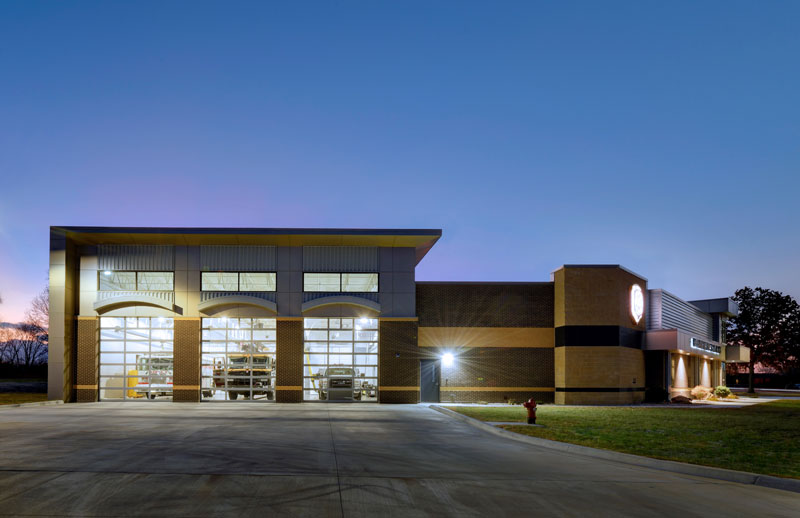
Schneider notes that on a typical day, four firefighters are assigned to the new Station 3, where a 75-foot quint, a heavy rescue, and a brush truck are housed. “The on-duty crew takes the appropriate apparatus for the call,” he observes. “They are backed up by our other two stations that will assist them as needed.”
Alex Mosby, project manager for Paragon Architecture LLC, which designed and built Lebanon’s Fire Station 3, says the project started out as a public safety center that included a police department headquarters, an emergency call center, an ambulance dispatch center, a fire department headquarters, and a fire station, but changed to only the two latter uses due to budgetary considerations.
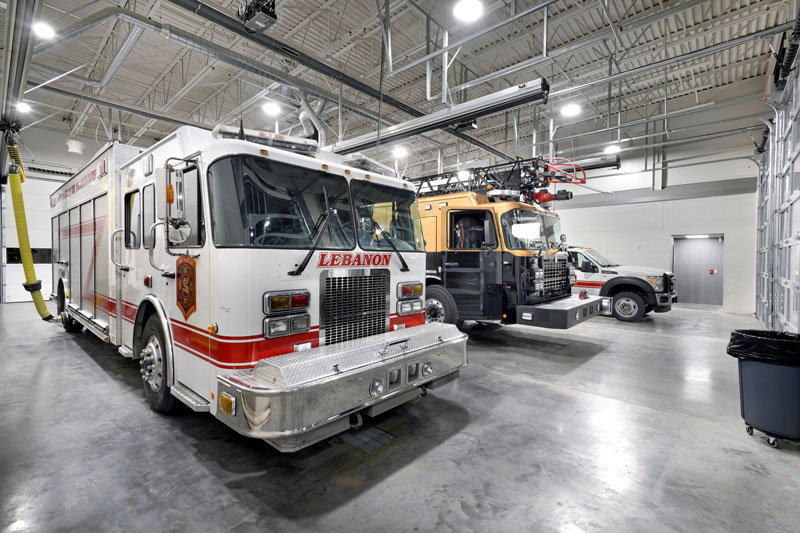
“What we were contracted to design and build was a headquarters fire station with three drive-through, double-deep apparatus bays,” Mosby points out, “that embraces the hot, warm and cold zone concept design to prevent contaminants from entering station living areas.”

He says that along one wall of the apparatus bays are a vented turnout gear storage room, a decon room with washer/extractors, dryers, and a sink to wash equipment and gear, as well as a private bathroom for personal decon, and cabinets to hold fresh clothing for firefighters. The firefighters return from a call, clean the trucks, decon their turnout gear, then themselves, and return to the living area through a neutral zone, Mosby notes.
The living spaces of Fire Station 3 have four individual bunk rooms, each with one single bed, and three individual closets, one for each shift. Two toilet/sink/shower rooms are adjacent to the dorms. Also in the living spaces are five offices for the chief, a battalion chief, a fire marshal and two others, as well as an open concept kitchen/dining/dayroom where the doors leading to the apparatus bays have crash bars for quick opening.
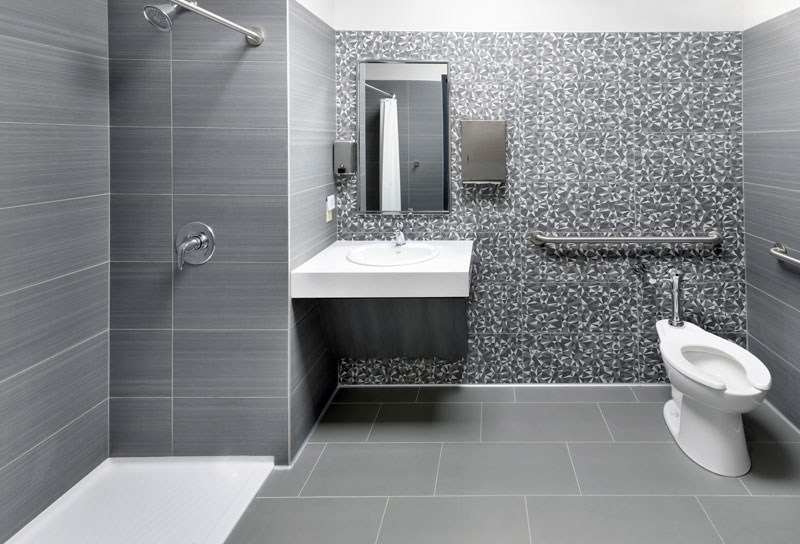
Mosby notes that Lebanon Fire Station 3 is built on a structural steel frame, with a workroom that doubles as a severe weather structure, constructed of concrete masonry. “The station has a low slope roof supported by metal joists,” he says, and the brick and metal siding and access bands are done in black and gold, which are Lebanon’s colors,” he adds.

Schneider points out that Lebanon had Paragon design a tower over the station’s public entryway with a large glass area to bring attention to an American flag on the wall above an I-beam section from the 9/11 World Trade Center displayed there. “This is Lebanon’s first new station since the 1970s,” he says, “and we wanted to focus on the service that firefighters have given to the community and the country.”
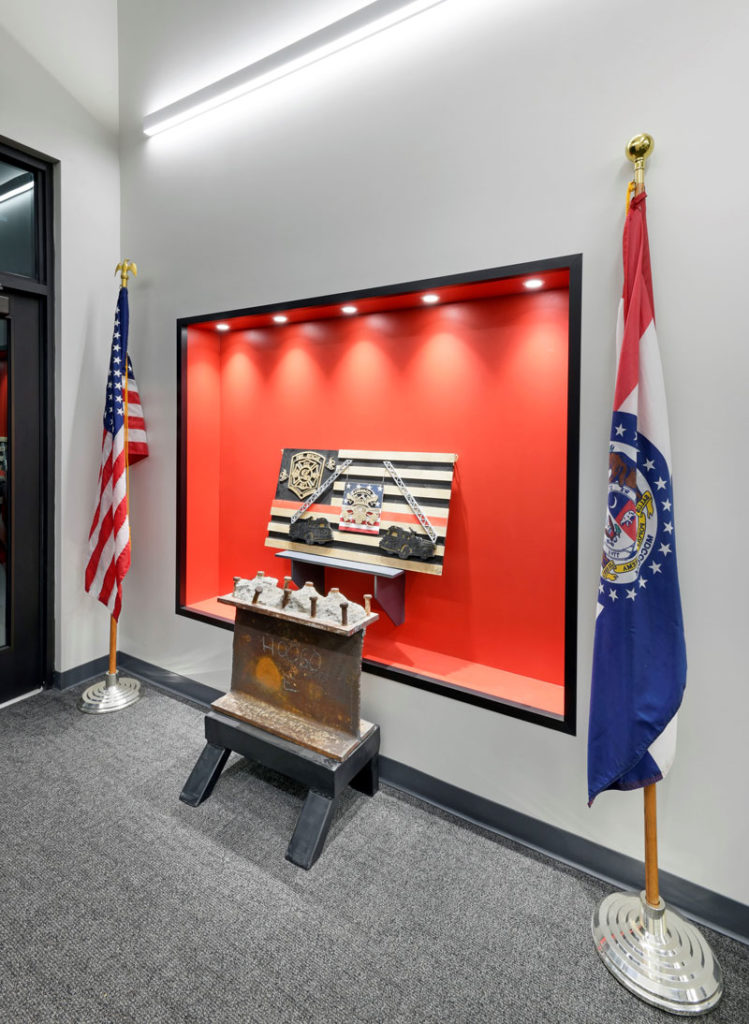
ALAN M. PETRILLO is a Tucson, Ariz.-based journalist, the author of three novels and five non-fiction books, and a member of the Fire Apparatus & Emergency Equipment editorial advisory board. He served 22 years with Verdoy (NY) Fire Department, including the position of chief.

